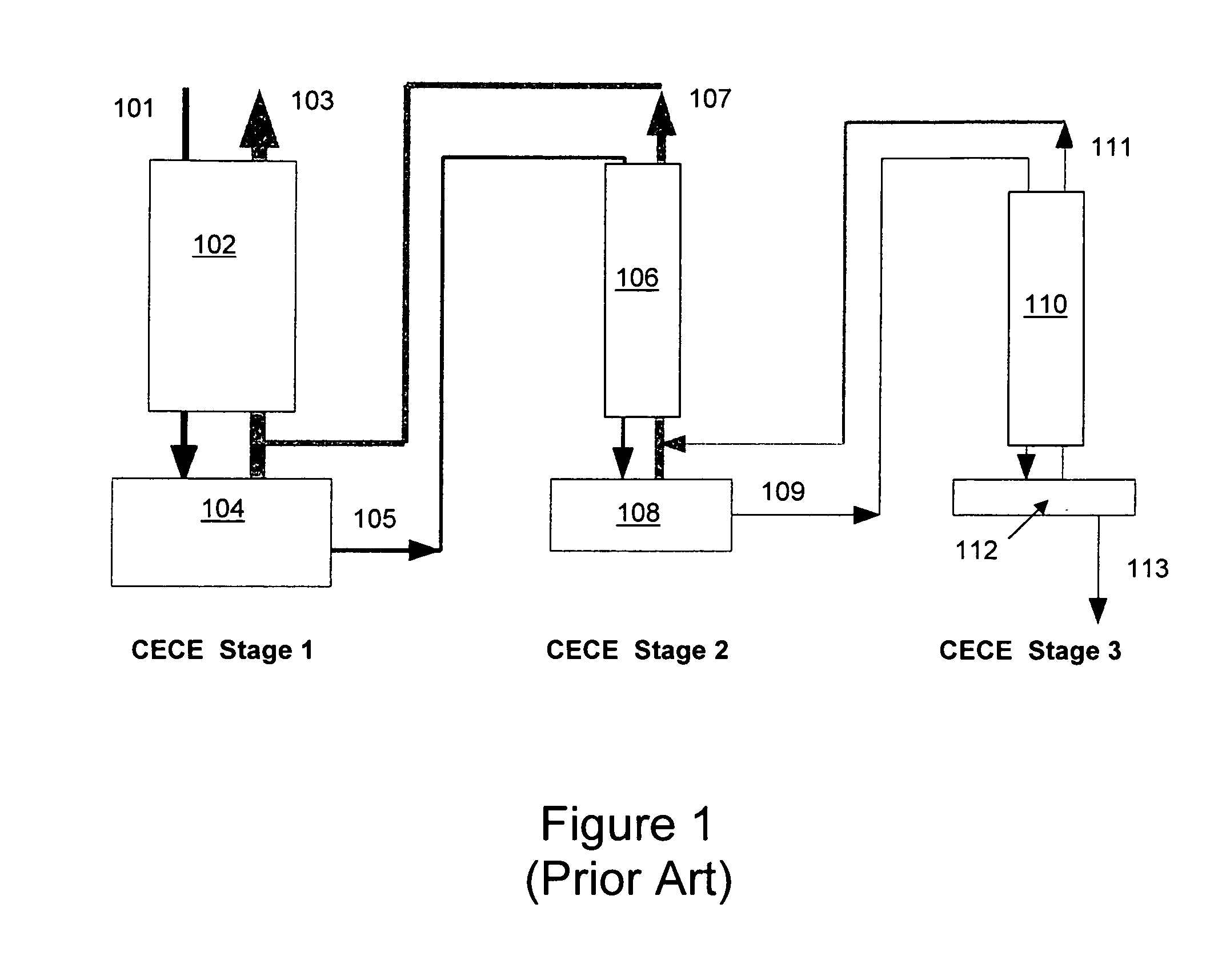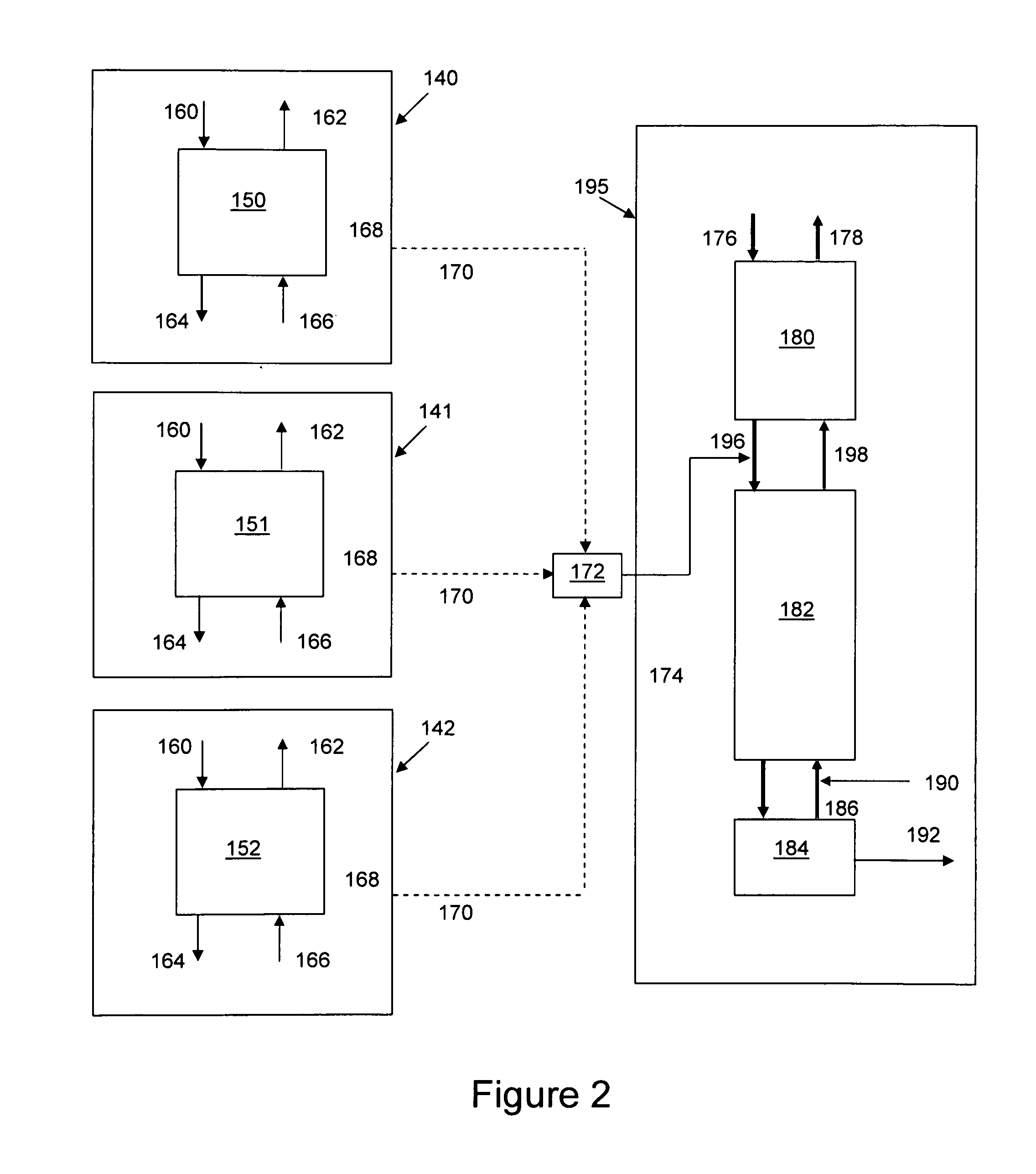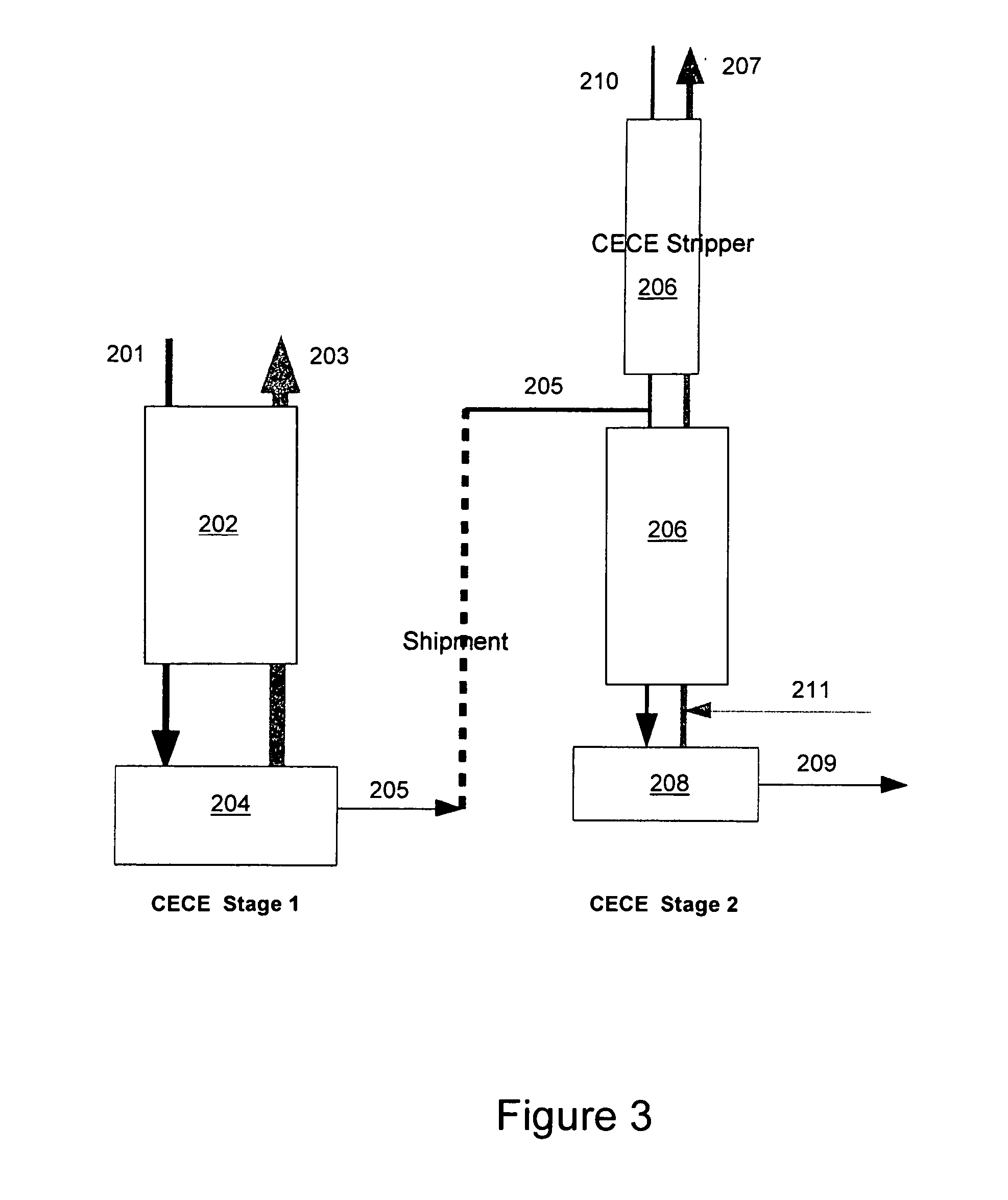Distributed pre-enrichment method and apparatus for production of heavy water
a technology of pre-enrichment and heavy water, which is applied in the direction of isotope separation, chemical/physical/physical-chemical processes, inorganic chemistry, etc., can solve the problems of large cost, large overhead cost, and inability to apply the process to small-scale electrolytic hydrogen production, etc., to achieve the effect of increasing the economics of production and the number of locations
- Summary
- Abstract
- Description
- Claims
- Application Information
AI Technical Summary
Benefits of technology
Problems solved by technology
Method used
Image
Examples
Embodiment Construction
[0061]FIG. 1 illustrates a conventional, prior art three-stage CECE (“N-CECE”) process as known in the art. The process is similar to that described in U.S. Pat. No. 3,974,048. In the first stage of the CECE process, input feed liquid water from feed source 101 passes down through a hydrogen gas / liquid water deuterium exchange catalyst column 102 in the course of which the deuterium content of the water is increased, into electrolytic cells 104. Hydrogen gas 103 generated in electrolytic cells 104 flows up through catalyst column 102 in the course of which its deuterium content is reduced. A fraction of the water flow 101 is directed as flow 105 to a Stage 2 in which further enrichment occurs in exchange catalyst column 106 before it is converted into hydrogen stream 107 in electrolytic cells 108. The flows of water and of hydrogen in Stage 2 are approximately related to those in Stage 1 in the inverse ratio of the enrichment of deuterium achieved in Stage 1. In a similar manner, a ...
PUM
 Login to View More
Login to View More Abstract
Description
Claims
Application Information
 Login to View More
Login to View More - R&D
- Intellectual Property
- Life Sciences
- Materials
- Tech Scout
- Unparalleled Data Quality
- Higher Quality Content
- 60% Fewer Hallucinations
Browse by: Latest US Patents, China's latest patents, Technical Efficacy Thesaurus, Application Domain, Technology Topic, Popular Technical Reports.
© 2025 PatSnap. All rights reserved.Legal|Privacy policy|Modern Slavery Act Transparency Statement|Sitemap|About US| Contact US: help@patsnap.com



